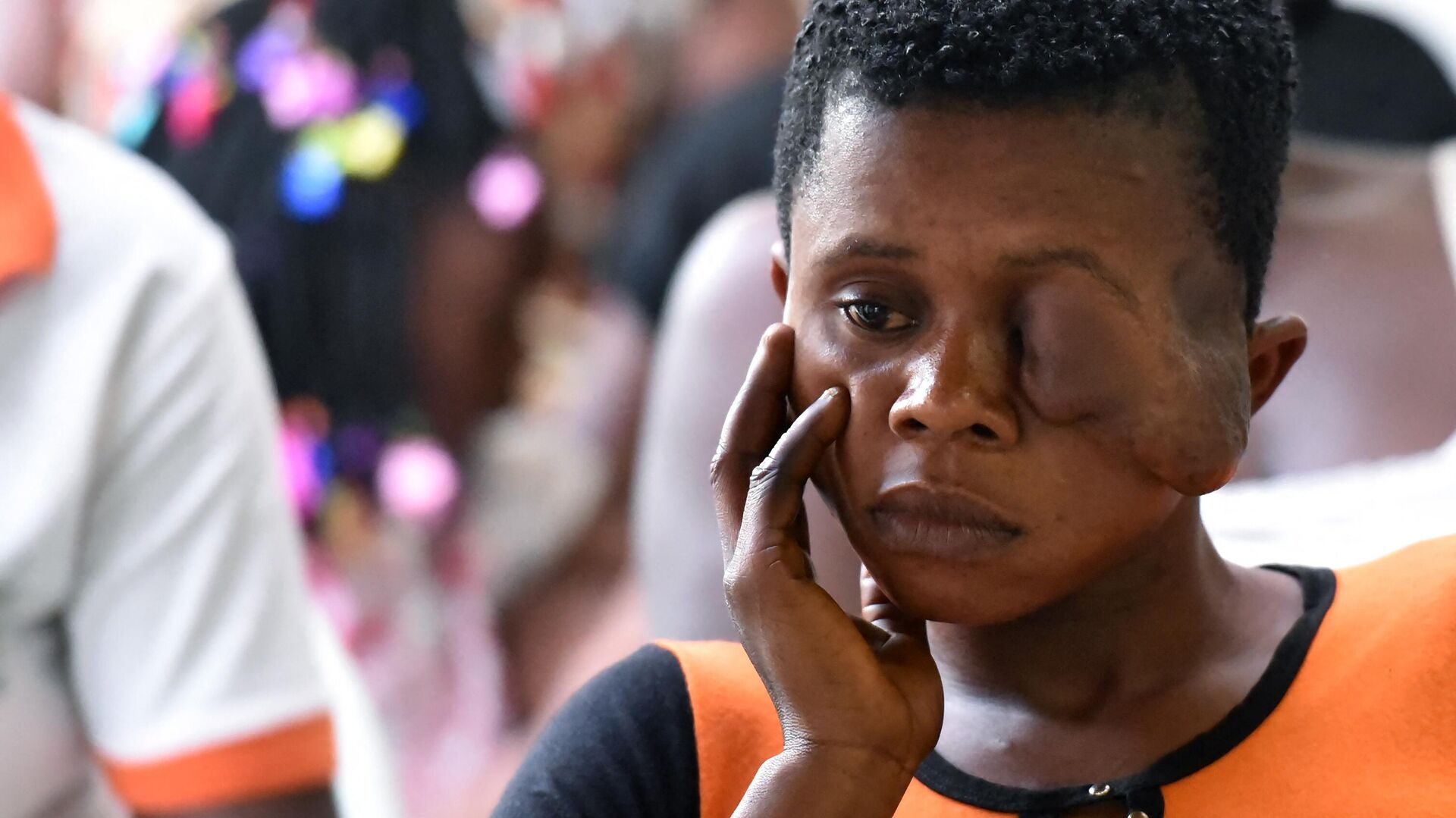https://en.sputniknews.africa/20231216/1064153662.html
'Pivotal Move': Noma Now Recognized as Neglected Tropical Disease to Drive Research, Says WHO
'Pivotal Move': Noma Now Recognized as Neglected Tropical Disease to Drive Research, Says WHO
Sputnik Africa
Noma, which derives its name from the Greek word "nomein" ("to devour"), is a severe gangrenous disease of the mouth and face. It primarily affects children... 16.12.2023, Sputnik Africa
2023-12-16T17:55+0100
2023-12-16T17:55+0100
2023-12-16T17:55+0100
world health organization (who)
disease
tedros adhanom ghebreyesus
medicine
drugs
treatment
research
nigeria
https://cdn1.img.sputniknews.africa/img/07e7/0c/10/1064156112_0:0:3017:1697_1920x0_80_0_0_6b4a0806ccd3db0def30c5ef97e61fb2.jpg
The World Health Organization (WHO) has included noma (gangrenous stomatitis) to its list of neglected tropical diseases (NTDs), the organization said on Friday.The WHO said that noma has been placed on the list of NTDs with the aim of raising global awareness of the disease, and promoting research, and encouraging funding and development efforts to limit the spread of the disease.Noma begins as an inflammation of the gums that, if left untreated, rapidly progresses to the destruction of facial bone and tissue. It is often fatal, and those who survive are severely disfigured.Accurate estimation of the number of cases is "challenging", however, according to the available WHO's data, as of 1998, there were 140,000 incidents per year, with a prevalence of 770,000 cases. The case fatality rate is estimated at 90%, although evidence suggests that it can be significantly reduced with early treatment.It is noteworthy that the Nigerian government played an important role in listing the disease. In 2023, on behalf of the 32 nations in the organization, it submitted a request to include the disease in the list of NTDs.According to the WHO, the request was backed by a substantial amount of data that demonstrated the disease's severity and classification, as well as evidence showing that the disease meets the requirements for inclusion on the organization's list.In late November, the world received the promising news that another disease in the list with similar pathogenesis — mycetoma — can be cured with a new safe, inexpensive and patient-friendly oral treatment fosravuconazole.The new treatment showed efficacy up to 85%, can be taken only once a week regardless of meals, and it barely interacts with other medications.
https://en.sputniknews.africa/20231124/new-inexpensive-safe--effective-treatment-found-against-deadly-disease-raging-in-sudan-1063769907.html
nigeria
Sputnik Africa
feedback@sputniknews.com
+74956456601
MIA „Rossiya Segodnya“
2023
Christina Glazkova
https://cdn1.img.sputniknews.africa/img/07e7/0b/07/1063380906_0:0:673:674_100x100_80_0_0_79628b4d0cd9f29291a57aa13bbf9e7a.jpg
Christina Glazkova
https://cdn1.img.sputniknews.africa/img/07e7/0b/07/1063380906_0:0:673:674_100x100_80_0_0_79628b4d0cd9f29291a57aa13bbf9e7a.jpg
News
en_EN
Sputnik Africa
feedback@sputniknews.com
+74956456601
MIA „Rossiya Segodnya“
Sputnik Africa
feedback@sputniknews.com
+74956456601
MIA „Rossiya Segodnya“
Christina Glazkova
https://cdn1.img.sputniknews.africa/img/07e7/0b/07/1063380906_0:0:673:674_100x100_80_0_0_79628b4d0cd9f29291a57aa13bbf9e7a.jpg
world health organization (who), disease, tedros adhanom ghebreyesus, medicine, drugs, treatment, research, nigeria
world health organization (who), disease, tedros adhanom ghebreyesus, medicine, drugs, treatment, research, nigeria
'Pivotal Move': Noma Now Recognized as Neglected Tropical Disease to Drive Research, Says WHO
Christina Glazkova
Writer / Editor
Noma, which derives its name from the Greek word "nomein" ("to devour"), is a severe gangrenous disease of the mouth and face. It primarily affects children aged 2−6 years old and is most common among people living in poor communities, with Africa being the most affected continent, according to the WHO.
The World Health Organization (WHO) has included
noma (gangrenous stomatitis) to its list of neglected tropical diseases (NTDs), the organization
said on Friday.
The WHO said that noma has been placed on the list of NTDs with the aim of raising global awareness of the
disease, and promoting research, and encouraging funding and development efforts to limit the spread of the disease.
"Noma is more than a disease, it is a social marker of extreme poverty and malnutrition, affecting the most vulnerable populations," Tedros Adhanom Ghebreyesus, WHO Director-General, was quoted in the statement. "By classifying noma as a neglected tropical disease, we are shining a light on a condition that has afflicted marginalized communities for centuries. We are committed to working with affected countries and communities to address the drivers of noma, and alleviate the suffering it causes."
Noma begins as an inflammation of the gums that, if left untreated, rapidly progresses to the destruction of facial bone and tissue. It is often fatal, and those who survive are severely disfigured.
Accurate estimation of the number of cases is "challenging", however, according to the available
WHO's data, as of 1998, there were 140,000 incidents per year, with a prevalence of 770,000 cases. The case fatality rate is estimated at 90%, although evidence suggests that it can be significantly reduced with early treatment.
It is noteworthy that the
Nigerian government played an important role in listing the disease. In 2023, on behalf of the 32 nations in the organization, it submitted a request to include the disease in the list of NTDs.
According to the
WHO, the request was backed by a substantial amount of data that demonstrated the disease's severity and classification, as well as evidence showing that the disease meets the requirements for inclusion on the organization's list.
In late November, the world received the promising news that another disease in the list with similar pathogenesis — mycetoma — can be cured with a new safe, inexpensive and patient-friendly oral
treatment fosravuconazole.
The new treatment showed efficacy up to 85%, can be taken only once a week regardless of meals, and it barely interacts with other medications.



